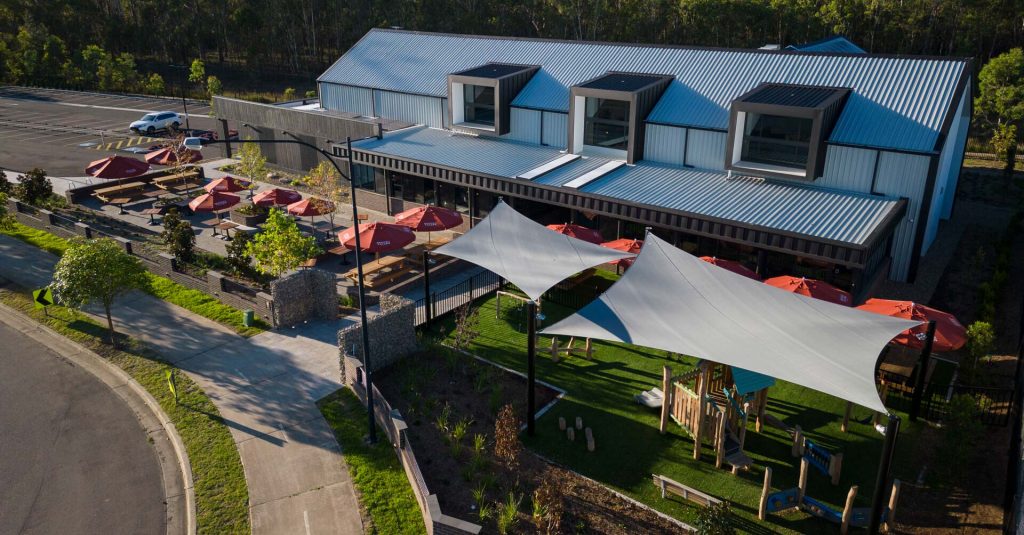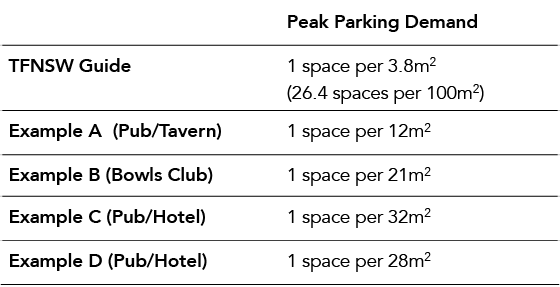A Case Study of Taverns and Pubs in NSW
What do you do when Development Control Plan (DCP) requirements are based on data from 1970’s?
To secure a development application approval, new developments must follow the planning and design guidelines set by the DCP of the local Council. When certain requirements of the DCP are completely out of touch with the real world, it severely affects the viability of the project and has the potential to negatively affect local communities.
That is the case with parking requirements for taverns and pubs in NSW. Most DCPs follow the guidelines set by Transport for NSW (TfNSW) Guide to Traffic Generating Developments.
Currently, the only available data in the TfNSW guide is based on research conducted in 10 pubs in 1978. Yes, you read it right, 1978.
The TfNSW study indicated a peak number of cars parked of 26.4 per 100m2 (1 space per 3.8m2 gross floor area (GFA)) of public licensed floor area. Most Councils DCPs follow the TfNSW data above.
Considering that a standard car park space measures 32m2, to comply with the TfNSW guide, the parking area of a pub would have to be approximately 8 times its GFA (26.4 spaces x 32m2 = 844.8m2 of parking area per 100m2 of GFA).
Take the example of a recent project of ours. A pub with a GFA of 1000m2 would be required to provide 263 car park spaces, equating to a parking area of approximately 8,400m2.
In this example, building an underground car park was not feasible. therefore, the requirements compromised the entire project.
However, before even trying to fit all these spaces into the site, understanding the actual parking demand for the context of this or any project is crucial to avoid building unnecessary car park spaces.
Driving behavioural changes
The world has obviously changed significantly since 1978. In terms of drinking and driving there were important developments that impacted people’s behaviour when choosing their transport mode to go to venues such as pubs and taverns:
- Random breath testing was introduced in NSW in 1982 as a trial, becoming law in 1985. Prior to that, breath testing began in 1968, but it could only be undertaken after an accident or traffic offense.
- The death toll was 1,291 in 1981 and estimated 41 in 2022.
Without conducting any survey, it is reasonable to assume that parking demand in pubs and taverns are lower today. In fact, the TfNSW guide itself admits that changes in behaviour have occurred since 1978. It actually recommends that peak parking demand and traffic generation are assessed based on the characteristics of the proposed developments and comparisons must be drawn with similar establishments.
Even though the TfNSW guide is clear on the limitations of their data, DCPs tend to look at it as the baseline data for determining parking numbers.
Parking demand now
As the TfNSW guide recommends comparison with other similar developments, it opens the door for proponents to build a case in favour of a parking provision more in line with the real demand.
Being recently involved in more than 10 projects for developing new pubs, taverns and similar venues (see map on next page), we have successfully assisted our clients in arguing for more realistic parking provisions and through that ensuring the feasibility of the project.
To illustrate the differences between the TfNSW data and current demand for parking in NSW, we have detailed below 4 examples with parking demand data we collected.
In addition to car parking, new developments tend to include cycling facilities based on the standards of TfNSW Walking and Cycling Guidelines. Some venues also provide on-demand bus services for patrons.
These initiatives further reduce the demand for car parking and encourage patrons to adopt a safe driving behaviour.
Providing less parking also frees up space to be utilised in ways that provide more value to the community.


